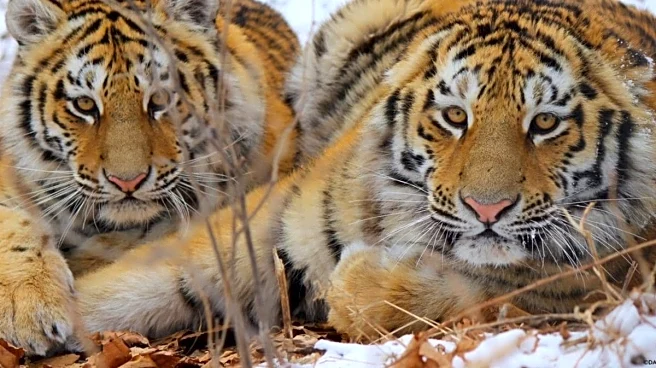There is hope for wildlife after all. After a century of population decline, the world’s largest cat, the tiger (Panthera tigris), classified as “Endangered” on the IUCN Red List, seems to be bouncing back slowly. Though it still remains critically depleted globally, the conservation efforts in South Asia have prevented a steeper decline in the population, according to the first such assessment of the tigers’ recovery potential.
The results are part of the first IUCN Green Status of Species Assessment for the tiger (Panthera tigris) released on Friday. Unlike the “IUCN Red List” of threatened species, which is the gold standard for assessing the risk of extinction of species, the “Green Status” of Species, developed recently, assesses their recovery
and conservation impacts alongside extinction risk. The findings coincide with the week-long IUCN World Conservation Congress, which opened in Abu Dhabi.
The assessment classified tigers as “critically depleted” but concluded that conservation efforts prevented greater loss of population, and that provides hope for their recovery across their range. In the long term, the recovery potential of the tiger was assessed as “medium,” indicating that intensified conservation could secure survival over the next 100 years. Under an optimistic scenario, as many as 11 spatial units could achieve “viable” status and ecological functions restored across key landscapes. Led by scientists from the Wildlife Conservation Society (WCS) in collaboration with WWF, Panthera, and the IUCN Species Survival Commission (IUCN SSC) Cat Specialist Group, the assessment is the most comprehensive evaluation of tiger recovery potential yet.
Century of decline, threats persist
Tigers are now extinct in nine of the 24 spatial units evaluated and are threatened in all spatial units where they still persist. Severe historical and ongoing threats, including habitat loss, prey depletion, poaching, and regional extinctions, pose serious challenges. But without conservation action over the past decades, these apex predators would likely have faced extinction across most of their range, according to the assessment.
Experts highlighted that tiger numbers increased for the first time in more than a century, and the tiger’s conservation legacy is rated “High,” indicating that sustained protection efforts slowed decline and prevented them from vanishing in up to seven spatial units. “Thanks to conservation, tigers have survived the worst century in their history. With renewed commitment and collaboration, they can recover across much of their range. If tigers were restored to all suitable, historic habitat, either by natural recolonisation or reintroduction, there could be over 25,000 tigers living in the wild—over five times the current global population,” said lead author Luke Hunter, Executive Director of the Big Cat Program at the Wildlife Conservation Society.
Fragile, yet resilient: On road to recovery
Tigers now occur in only 10 of the 46 countries where they once bred. India alone has about 75 per cent of the world’s tiger population, with about 58 tiger reserves spread across 18 states, and its ambitious Project Tiger is marking a 50-year milestone. “Recent tiger recoveries, particularly in South Asia, inspire hope for the species, highlighting the considerable potential to boost tiger populations and restore their ecological roles,” said Abishek Harihar, Director, Tiger Programme at Panthera.
India began tiger estimation surveys in 2006 and has, so far, continued to show a consistent increase in the population. According to the All India Tiger Estimation (2022), the population rose to an estimated 3682 individuals (range 3167-3925), up from 2967 (range 2603-3346) in 2018 and 2226 (range 1945-2491) in 2014. More than three-fourths of the tiger population is found within protected areas, but the ones outside fully protected reserves remain at high risk.
Since tigers recover very slowly, experts highlighted that major changes are unlikely over the next decade. Nonetheless, concerted efforts in regions like India, Bhutan, and Nepal can result in remarkable increases in tiger numbers over the next 10 to 20 years, it stated.
“Tigers have been listed as endangered for decades, but the Green Status assessment shows that this isn’t the whole story; conservation efforts have worked, and there is realistic hope for recovery of tigers in the future,” said Molly Grace, lecturer at the University of Oxford and co-chair of the IUCN Green Status of Species Working Group.





/images/ppid_a911dc6a-image-176038523003148112.webp)

/images/ppid_a911dc6a-image-176029362554440166.webp)




/images/ppid_a911dc6a-image-17601714727446111.webp)
/images/ppid_59c68470-image-176018505511235109.webp)

/images/ppid_a911dc6a-image-17604028387385898.webp)